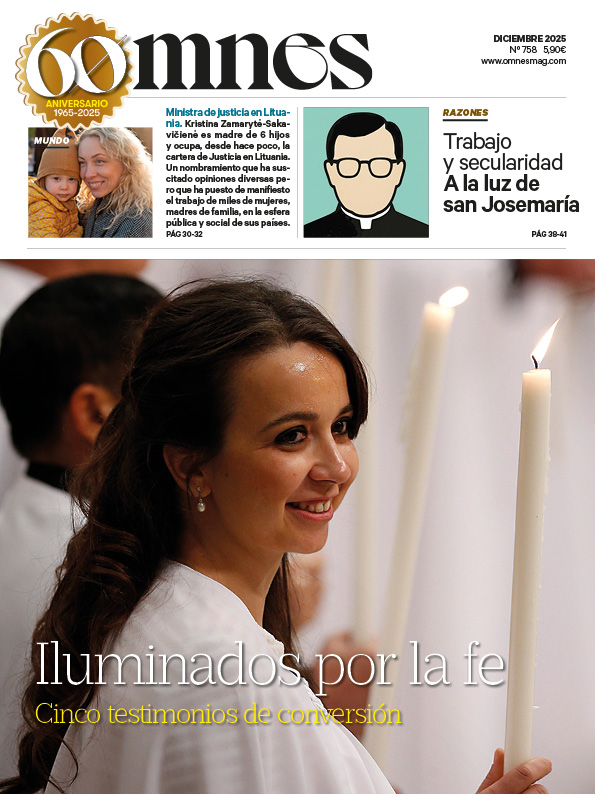By "biblical canon" is meant the books recognized as sacred texts by the Church. The term derives from the Greek κανών ("kanon", "reed" or "straight stick") and indicated first a unit of measurement, then, by extension, came to define an official catalog, a model.
Why do these books exist in the Church's New Testament canon?
Already in the second century A.D., especially in response to Marcion, who wanted to exclude from the Christian canon the Old Testament and all those parts of the Old Testament and all those parts of the Old Testament that were not in the Christian canon. New that were not in line with his teachings (for him, the God of the Christians was not to be identified with that of the Jews), Justin (140) and Irenaeus of Lyons (180), followed later by Origen, reaffirmed that the canonical Gospels, universally accepted by all the Churches, should be four. This was confirmed in the Muratorian Canon (an ancient list of the books of the New Testament, dating from around 170).
Precise criteria were followed to establish the "canonicity" of the four Gospels:
- Antiquity of the sources. As we have seen, the four canonical Gospels, dating from the first century A.D., are among the oldest and best attested sources in terms of the number of manuscripts or codices (about 24,000, including Greek, Latin, Armenian, Coptic, ancient Slavic, etc.), more than any other historical document.
- Apostolicity. The writings, to be "canonical", had to go back to the Apostles or their direct disciples. Incidentally, the term "according to", placed before the name of the evangelist (according to Matthew, Mark, etc.) indicates that the four Gospels make a single discourse on Jesus, but in four complementary forms, according to the preaching of the individual Apostles from whom they derive: Peter for the Gospel according to Mark; Matthew (and probably Mark) for the "according to Matthew"; Paul (and, as we have seen in the previous article, also Mark and Matthew) for the "according to Luke"; John for the Gospel that bears his name. In practice, it is not so much the individual evangelist who writes the individual Gospel, but the community, or the Church born from the preaching of an apostle.
- The catholicity or universality of the use of the Gospels: they were to be accepted by all the main Churches ("catholic" means "universal"), that is, Rome, Alexandria, Antioch, Corinth, Jerusalem and the other communities of the first centuries.
- Orthodoxy or righteous faith.
- The multiplicity of sources and the numerous and proven testimonies in favor of the canonical Gospels (and here again we cite, for example, Papias of Hierapolis, Eusebius of Caesarea, Irenaeus of Lyons, Clement of Alexandria, Pantene, Origen, Tertullian, etc.).
- Explanatory plausibility, i.e. the comprehensibility of the text according to a coherence of cause and effect.
Criteria for the historicity of the Gospels
In addition to the early testimonies of the Fathers of the Church and the criteria used as early as the second century A.D. (for example, for the Muratorian Canon), other methods have been developed, especially in contemporary times, to confirm the historical data we already possess about the figure of Jesus of Nazareth and the Gospels.
Réné Latourelle (1918-2017), a Canadian Catholic theologian, identified criteria for attesting to the historicity of the Gospels:
- Multiple attestation: a fact confirmed by several Gospel sources (for example, Jesus' closeness to sinners) is authentic.
- Discontinuity: a fact that cannot be traced back to the concepts of Judaism and the early Church is authentic, such as the use of "abba" ("father") for God (the word "father", understood in the sense of intimate and personal filiation to God, appears 170 times in the New Testament, 109 of them only in the Gospel of JohnThe word "national", and yet only 15 times in the Old Testament, but always with the meaning of collective, "national", paternity of God with respect to the Jewish people.
- Conformity: what is authentic is what is coherent, what conforms to Jesus' environment and teachings (e.g., the parables and beatitudes).
- Necessary explanation: for example, the "huge" personality of Jesus clarifies a whole series of otherwise incomprehensible events and behaviors (his strength, authority, charisma exercised over the multitudes, etc.).
- Jesus' style: combining majesty and humility, goodness and absolute coherence, without hypocrisy and without contradiction.
There are also other more specifically literary and editorial criteria:
- The study of literary forms ("Formgeschichte"), based on the literary analysis of the Gospels, to determine the "Sitz im leben", that is, the life of the community in which they originated, to "incarnate" the existence of Jesus in a living and particular context.
- Study of the written and oral traditions ("Traditiongeschichte") prior to the Gospels, in order to compare them with the Gospels.
- A study of the evangelists' writing criteria ("Redaktiongeschichte"), which examines how each evangelist collected data and then put it in writing, organizing it according to particular needs, such as preaching to a particular community.
Semitism and philological analysis
In the first centuries of the Christian era, it was known that at least two canonical Gospels had been written in a Semitic language (Hebrew or Aramaic). However, until Erasmus of Rotterdam (1518), the memory of this older stratum was lost, "hidden" under the Greek language in which the texts have come down to us. Since then, modern philological studies have made it possible to reconstruct the traces of its original Semitic structure.
These traces, called "Semitisms", are of various kinds (borrowings, syntax, style, vocabulary, etc.). Jean Carmignac, thanks to his studies on the language of Qumran and on the works of the Jewish masters of the so-called intertestamental period, has come to the conclusion that the synoptic Gospels, in particular Mark and Matthew, must have been written first in Hebrew (not in Aramaic) and then translated into Greek. In retranslating the Greek text into Hebrew, assonances, rhymes and poetic structures absent in the Greek prose emerge.
This would advance the dating of the Gospels by at least two decades, bringing them even closer to the events narrated and to the direct witnesses. It also places Jesus (and scholars such as John W. Wenham or several Israeli Jewish experts, including David Flusser, insist on this) in a context more in harmony with the Jewish environment of the time, as confirmed by the Qumran manuscripts.
Let's look at a couple of examples of semitisms.
When we read in the Gospels that Jesus had brothers, the term 'brother', the Greek "αδελφός" ("adelphós) translates the Hebrew and Aramaic "אָח" (aḥ), by which, however, in the Semitic sense, not only 'Germanic' brothers are meant, but also 'unilateral' brothers, cousins, relatives in general, members of the same clan, tribe or people. Even in modern Hebrew there is no term for a cousin: he is simply called 'uncle's son'.
Or again (Matthew 3:9): "I tell you that from these stones God is able to raise up true children to Abraham" (Matthew 3:9).
In Greek: "λέγω γὰρ ὑμῖν ὅτι δύναται ὁ θεὸς ἐκ τῶν λίθων τούτων ἐγεῖραι τέκνα τῷ Ἀβραάμ"; "Lego gar hymìn oti dynatai o Theos ek ton lithon touton egeirai tekna to Abraam."
In Hebrew (a possible translation): "אלוהים יכול לעשות מן האבנים האבנים האלה בנים לאברה"; "Elohìm yakhòl la'asòt min ha-abanìm ha-'ele banìm le-Avrahàm".
As can be seen, only in the Hebrew version there is assonance between the term "sons" ("banìm") and the term stones ("abanìm"). And not only that: this play of rhyming words fits perfectly with the technique of transmitting teachings based on assonance, alliteration, parables, oxymorons and juxtapositions (the famous camel passing through the eye of a needle) that the Tannaìm used to make their maxims memorized.
The example just given may also be present in Aramaic ("stones": 'ebnaya; "sons": banaya), but many are only in Hebrew.







